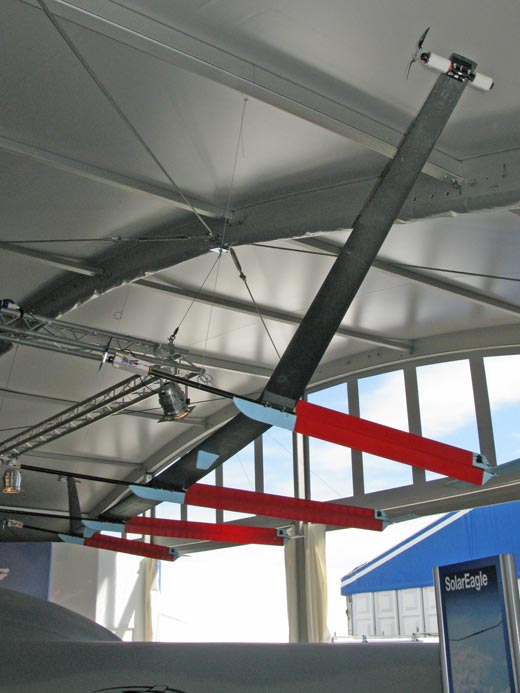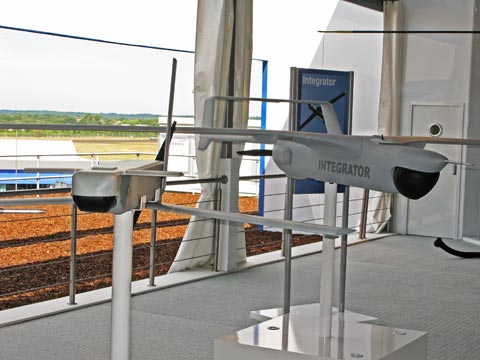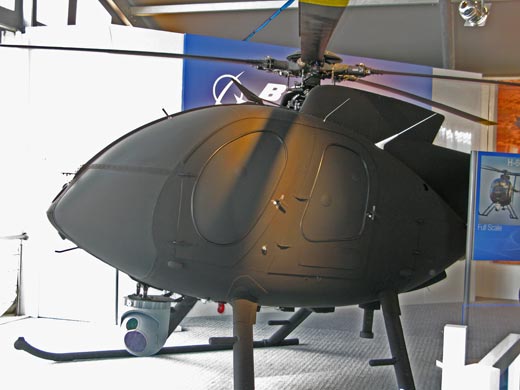For the first time at an international airshow Boeing dedicated a special display for its newly established UVS unit. At the center was the Phantom Ray stealth UCAV, a technology demonstrator of the a four-tailed, six-engine flying platform built by QinetiQ, designed to experiment the flight rules to be used with the future Solar Eagle, a 400 foot span aerial vehicle proposed by Boeing for DARPA’s Vulture 2 program. Boeing’s Solar Eagle could fly by 2014, carrying payloads up to 400 pounds to a cruising altitude of 60,000 ft, where it will remain on station for up to 80 days. DARPA would like an operational vehicle to remain in station up to five years…


The Solar Eagle will be capable of flying missions of unlimited duration, powered by multiple electrical motors that will provide the thrust for propulsion and steering, by using differential thrust of different motors. These motors will run on electrical energy generated by fuel cells and solar arrays. The energy stored on board will be sufficient to carry the Solar Eagle to its operating altitude, where the air is calm and plenty of solar energy can be stored during daytime, for use by the motors and systems on board overnight. The full-scale Solar Eagle will be configured as a tail-less flying wing fitted with eight motors, with payloads and energy storage carried in a boom-shaped canister. Boeing has recently completed the assembly of the Hydrogen-powered Phantom Eye that will also be capable of flying long endurance, high altitude missions.

Boeing also displayed three models of the long endurance A-160T Hummingbird, configured for three missions: persistent area surveillance, persistent area dominance, a weaponized configuration equipped with EO/IR payload and six Hellfire missiles and a tactical transport version, carrying cargo internally or as sling load.



















